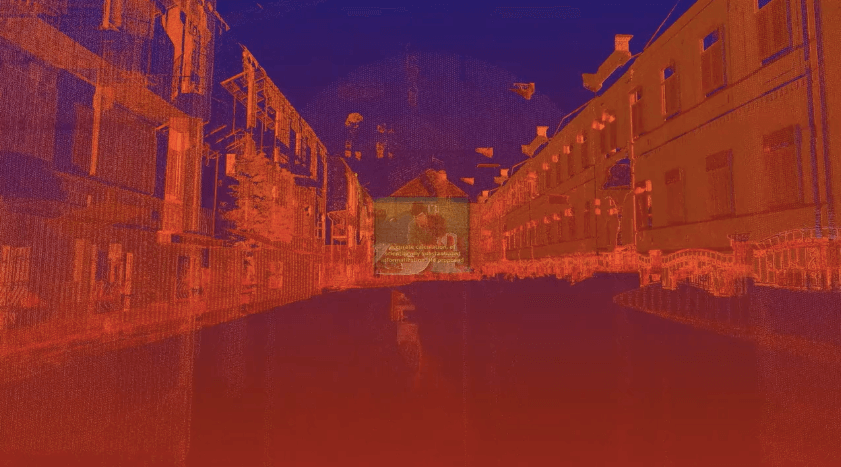Dec 01 2018
Screenings and Lecture | Biennale de l’Image en Mouvement: The Sound of Screens Imploding, Day Two
Sat | 7PM

Swiss Institute is delighted to present a series of screenings and lectures included in this year’s Biennale de l’Image Mouvement (BIM): The Sound of Screens Imploding. Having opened at the Centre d’Art Contemporain in Geneva from November 8-10, BIM 2018 centers upon the fundamental notion that moving images often dwell outside of the screen. The screenings and performances of BIM 2018 will travel to various institutions around the world, adapting accordingly to each site.
Program
Korakrit Arunanondchai & Alex Gvoijc, No History in a Room filled with People with Funny Names 5
Bahar Noorizadeh, After Scarcity
Ian Cheng in Conversation with Andrea Lissoni, Emissary’s Guide to Worlding
Please RSVP to rsvp@swissinstitute.net. Please note: Please note: events at Swiss Institute are limited capacity, and entry is on a first-come, first-served basis.
For more information on Day One, click here.
About the artists
Korakrit Arunanondchai (b. 1986, Bangkok, TH. Lives and works in New York, US and Bangkok, TH) sees his video installations and performances as a site for research and collaboration. He has a number of ongoing collaborators including boychild, Alex Gvojic, and members of his family. His process for a new video often begins with the idea of mutating the words from the title of the previous video: “History,” “Room,” “People.”
Alex Gvojic (b. 1984, Chicago, US. Lives and works in New York, US ) is an environment designer and cinematographer whose work focuses on creating “hyper-realistic” environments that mix video, lighting, and cinematic tropes to suspend the audience’s disbelief and allow them to sublimely enter a world that feels both familiar and foreign. By transmuting physical spaces, he explores the relationship between seeing and believing.
Bahar Noorizadeh (b. 1988, Tehran, IR. Lives and works in London, UK)is an artist, writer, and filmmaker. She works on the reformulation of hegemonic time narratives as they collapse in the face of speculation: philosophical, financial, legal, futuristic, etc. Noorizadeh’s practice examines the relationship between aesthetics and reason, and the desubjectification of experience as a pathway for producing new social subjects.
Ian Cheng (b. 1984, Los Angeles, US. Lives and works in New York, US) makes simulations that explore the nature of mutation and our capacity to embrace change. Drawing on principles of video game design and cognitive science, Cheng’s virtual ecosystems are populated with characters governed by competing AI models. Each of the models attempts to perpetuate its approach amidst otherworldly environmental conditions. What emerges is an endless, unpredictable stream of artificial life
Pan Daijing (b. 1991, Guiyang, CN. Lives and works in Berlin, DE) is an artist and musician. Her raw approach as composer and performer takes many forms: sound, choreography, installation, and storytelling. Soul-baring utterances and sonic, aesthetic outbursts are the main tendons of her practice. Her poetic, uncanny work interweaves vehicles of power and vulnerability, and often oscillates along paradoxical conceptual states and spatial interactions.
About Biennale de l’Image en Mouvement
The Biennale de l’Image en Mouvement was founded in 1985 in Geneva and was reinvented in 2014 as a platform for producing new works. A unique hybrid event—at the crossroads of a film festival, a plethora of solo exhibitions, performances and a platform for research and production—the BIM brings together visual artists, performers, musicians and filmmakers. The latter engage in a dialogue with the curators throughout the production process of a new work, financed or co-financed by the Centre d’Art Contemporain Genève and premiering in Geneva. The Biennale de l’Image en Mouvement in Geneva has therefore become a full-fledged production platform, with each edition presenting only new works.
About the curators
Andrea Bellini is the director of the Centre d’Art Contemporain Genève since 2012. Prior to this, he was the co-director of Castello di Rivoli, the director of the art fair Artissima, curatorial advisor at MoMA PS1 and editor in chief of Flash Art International. Andrea Bellini holds a degree in Philosophy (1996), and a postgraduate diploma in Archaeology and History of Art, University of Siena (2002). In 2014, he launched a new version of the Biennale de l’Image en Mouvement and transformed it into a production platform for moving image works. Bellini has lectured internationally at academic and art institutions, and has directed various publications. He is also a member of various comities, such as the CERN’s Cultural Advisory Board, the Scientific Committee of ARCOLisboa, ARCOMadrid, Emerge Prize, Museo d’Arte Contemporanea Donnaregina (MADRE) in Naples, the Acquisitions Committee of NMNM Nouveau Musée National de Monaco, the Advisory Committee of Arthub, Shanghai and the academic council of HEAD in Geneva.
Andrea Lissoni, PhD, is Senior Curator, International Art (Film) at Tate Modern since 2014. He has a background in art history, holds a degree in Modern Art history (University of Pavia) and obtained a PhD from the University of Udine/ Université Paris 1. Lissoni was Professor of the History of Contemporary Art at the Academy of Fine Arts of Brera, Milan (2001–13), taught at Bocconi University, Milan (2007–13), sits on the Board of Film London and is Board Member of the EYE Prize, Amsterdam. Formerly curator at HangarBicocca, Milan, the cofounder of the independent network Xing and codirector of the international festival Netmage in Bologna (Live Arts Week since 2011), in 2012 he cofounded the online cinema Vdrome. At Tate Modern he launched in 2016 a yearly Cinema Programme conceived as an exhibition unfolding throughout the year, the 2017 and 2018 BMW Live Exhibition, and curated the Hyundai Turbine Hall Commission 2016, Anywhen by Philippe Parreno as well as the expanded exhibition Joan Jonas (2018).
Image: Bahar Noorizadeh, After Scarcity, 2018, still. Courtesy of the artist.
